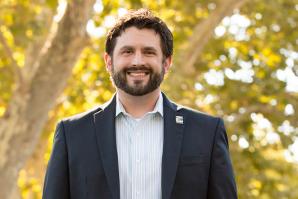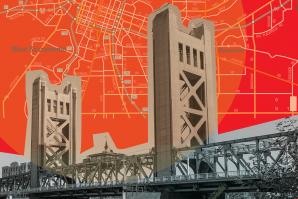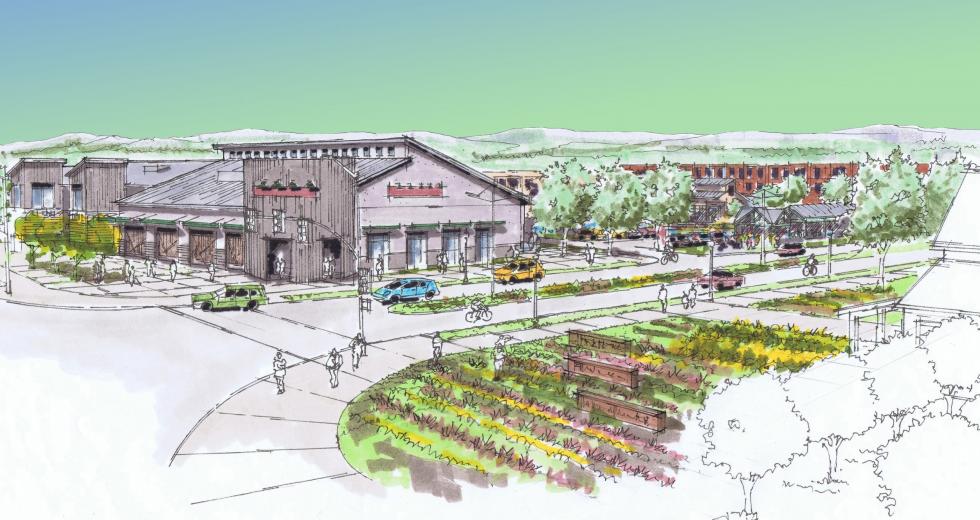The Cannery is a housing development with a distinctly Davis flavor—that is, the taste of home-grown fruits and vegetables. The 547-unit development, which started construction this past May, promises to provide both renters and homebuyers with their own fruit and nut trees and, in some cases, vegetable gardens as well. The symbolic centerpiece of the development is a 7.5-acre farm that will sit between the new homes and the farmland that borders the city.
A development of The New Home Company, The Cannery represents the convergence of two cultural forces in the Sacramento Valley: the farm-to-table movement and the growing interest in urban agriculture.
“This is the first farm-to-table neighborhood,” says developer Kevin Carson, president of The New Home Company’s Northern California office, about the new development rising on the former site of the Hunt-Wesson tomato-canning factory.
Early versions of The Cannery’s landscape design featured edible plants in nearly every spot they could be planted, recalls Joe Runco, a principal in the Sausalito office of landscape architecture firm SWA, who led the design team responsible for both the master plan and the landscaping.
“There was some pushback from the city at that point,” Runco says, “because it was unclear who was going to tend all those plants.” Later versions limited most of the fruit trees and vegetable gardens to specific homesites. The Center for Land-Based Learning, a Winters-based non-profit, has been part of the planning process and will manage the farm.
Beyond the romantic image of a town-and-farm lifestyle, The Cannery is notable for the wide variety of housing types available in a single, mixed-use community. They range from conventional single family homes to row houses, courtyard housing, units with entrances off of alleys and “stacked-flat” apartment units. For older residents, elevator-served units will feature elevators that open directly into the front door of apartments.
More unusual is the availability of accessory apartments, self-sufficient rental units located behind many of the single family homes. Popularly known as “mother-in-law units” or “granny flats,” accessory apartments are small, affordable dwellings much in demand among cost-constrained singles and young couples. Those separate units also work well, if needed, for sulky teenagers or aging parents, both of whom might value the independence and privacy offered by the unit.
The housing mix, in part, reflects the wishes of Davis residents who attended focus groups in 2012, according to Carson. And in a nod to the city’s famous love of bicycles, the new neighborhood contains 10 miles of bike trails, while every garage is fitted with a special alcove for bike storage.
Public areas include parks, a block of shop called Cannery Village (modeled after Aggie Village in Davis) and a performance amphitheater. Much of the planting in the public areas is drought-tolerant.
In a landscape increasing taken up by cities, wildlife habitat is another environmental concern. For birds and animals, the outer edges on three sides of the new neighborhood have been left undisturbed. Those undeveloped margins also provide a 150-foot buffer zone to separate the new neighborhood from existing farms.
And in a community with its own “official” butterflies, the developer has found a way to accommodate the colorfully winged insects: Landscape workers are planting a type of milkweed favored by Monarchs. The black-and-orange butterflies are one of two species adopted by the City of Davis.
Editor’s note: The fifth paragraph originally implied that the Center for Land-Based Learning has recently joined the project, and has been edited to reflect the CLBL’s ongoing involvement.
Recommended For You

Growing the Anti-Growth City
Acuity with Matt Yancey
Matt Yancey has been selected as the new CEO of the Davis Chamber of Commerce after serving more than seven years as the director of business and economic development at the Sacramento Metro Chamber. So how do you grow a city that’s been historically anti-growth?

Green Grids
Transportation reforms throughout the region are changing the ways people live and travel in Yolo County
It’s been a year since Gov. Jerry Brown signed legislation that created the Active Transportation Program to boost non-motorized transportation across the state, where one in four Californians are obese and more than 3.9 million are diabetic. And as California emerges as a national leader in transportation reform, Yolo County is finding itself at the forefront of the movement.

Bridging the Divide
West Sacramento’s massive transportation shift is redefining its identity
Long regarded as the region’s industrial bastion relegated to the other side of the river, today’s West Sacramento is barreling out of the past.

#YOLO
The 7 best bike rides in Yolo County
Lovely scenery along gently rolling foothills has always made Yolo County an ideal place for cyclists, but who knew everyone took it so seriously?



